Training Day 1
We began day 1 with an explanation of the range content as drills designed to showcase the particulars of running the 1911 platform. Proper lubrication for the 1911 was discussed as the first teaching point. The 1911 is not a weapon that can be run with three drops of lube. Much like the M4, if you want it to run reliably, it must be generously lubricated. Mr. Vickers demonstrated his lubrication process which involved generously lubricating the slide rails, the front of the barrel, and the face of the hammer, which then runs into the internal fire control components lubricating them as well. As I have heard him say in other courses, here Mr. Vickers related that if you are down to your last drop of lubrication and you're wondering where it should go, the answer is the barrel hood. The barrel hood is the highest friction point on the weapon, as the slide has to slide over the top of it every time the weapon cycles. The action should then be cycled several times (including dryfires) to work the lube into all the appropriate nooks and crannies.
Range work began with the case on the front sight dryfire drill, which then led to ball and dummy, then command ball and dummy. Then moved to trigger reset drills. Then moved to 1-2-3 shot drills from the low ready. Then moved to drills done from the draw. Then competition requiring two shots kept in the 6" white circle on the target, moving progressively back until you dropped rounds out of the white. Last man standing wins.
The round count prior to breaking for lunch was very low, but even with this relatively low round count there were plenty of malfunctions. The strangest was probably one I experienced. I was carrying some spare magazines in a pocket (Leaving my double mag pouch on the belt for emergency reloads...when you're shooting a single stack you keep lots of spares handy) where apparently there was a shred of a gum wrapper. This wrapper somehow worked it's way down into one of my magazines and wrapped around the nose of one of the rounds in the middle of the magazine. As the weapon tried to feed that round the wrapper went into the chamber first, which prevented the round from feeding. That was a first for me. I always use a mag carrier to carry my spare magazines in or if I'm forced to use a pocket I use a pocket holder for the magazine to avoid getting crud in the magazine for exactly this reason. I see lots of guys who just carry the spare in the pocket and when I bring up the possibility of some crud getting in the magazine and causing a malfunction the usual response I get is "What are the odds of that actually happening?"
Ummm....pretty good, apparently.
Other malfunctions were the result of more common 1911 issues. There are a lot of little things involved in making a semi-auto pistol cycle reliably. There are even more little things involved in making an older design like a 1911 cycle reliably, largely due to how far the next round has to travel from the magazine into the chamber. Mr. Vickers explained how everything from the condition of the magazine spring and recoil spring to the shape of a bullet and even the crimp used on a round impacts the function of the 1911. He also explained how the 1911's rather delicate feeding cycle is made even more fragile by attempts to make the weapon smaller than the original 5" gun. The smaller the 1911 the smaller the margin of error for each and every part of the cycling equation becomes. This is why many attempts at compact 1911's fail miserably in the reliability department.
If you think of a 5" 1911's function like riding a unicycle, shrinking the 1911 to a 3" design is like trying to ride a unicycle on a tightrope while juggling porcupines and running chainsaws.
The general gist of the discussions held today on the 1911 can be boiled down into these points:
- Stick to 5" 1911's in .45 ACP with the traditional barrel bushing design.
- Use quality magazines.
- What most 1911 makers ship in their guns from the factory does not qualify as quality magazines. They are generally crap. For those looking for a good magazine to standardize on, the Wilson 7 round magazines should get the nod.
- Note that there is a marked difference between the lifespan of Wilson 7 round magazine springs and the 8 round magazine springs. The 8 round magazine springs are thinner and set much easier than the 7 round magazines. I've run the 8 round magazines for a long time and the difference between a brand new spring and one you've kept in a loaded magazine for a while is DRAMATIC.
- Regularly replace the recoil spring. The standard weight spring (16 pounds) is pretty much done after 1,000 rounds. The 18/18.5 pound springs last considerably longer.
- Again, the combination of magazine spring, recoil spring, bullet shape, overall length of the cartridge, etc is crucial to how a 1911 functions. Many 1911 makers do not use factory ammo to test their guns. They often use custom loaded ammo that presents the best case feeding scenario for the 1911. Most end users do not. This is a source of considerable pain and frustration.
After our little rap session on the 1911, Mr. Vickers went over reloads with the 1911. Mr. Vickers teaches using the weak hand thumb to manipulate the slide release, which tends to be the most efficient way to drop the slide from lock. The 1911's slide release is generally beyond the reach of most people's strong hand thumb, requiring either a shift in the grip to activate or use of the weak hand thumb.
Day 2 --
Training day 2 began in the classroom as Mr. Vickers took everyone through a complete detail strip of the 1911. This didn't exactly go smoothly.
- Hex head grip screws: These are a terrible idea. One individual in the class found out why firsthand as one of his hex-head grip screws broke from over-torquing, which prevented him from removing the right side grip on his pistol. If you have an ambidexterous safety, this sort of problem essentially leaves you unable to detail strip the weapon.
- Grip screws in general: Apparently a lot of people on the internet tell others to lock-tite grip screws. This is fruiter than Elton John in a strawberry patch. This can basically turn the grip screw bushings into the grip screws by locking them into place.
It should be noted here that we spent probably 15-20 minutes just getting grip screw issues dealt with...and this wasn't just happening on el-cheapo 1911's. Mr. Vickers referred to this as a "clue" about the 1911's overall suitability as a go-to platform for many people.
After finally getting through the detail strip, Mr. Vickers went through major points of concern on the 1911 platform.
- Extractor hook length: Mr. Vickers showed us the proper fit between the rim of the case and the hook of the extractor. Several students had weapons that were in dire need of proper fitting, including my pistol. I'd never had any issues with it, but my extractor hook was way out of spec. Mr. Vickers fixed this with a little filing.
- Extractor tension: The procedure for checking the tension on the extractor and for adjusting the tension on the extractor was covered. Here again several students had extractor tension issues. My pistol was probably the worst of the bunch as there was hardly any tension to speak of.
- Extractor hole spec: The way the hole for an extractor is drilled into the slide can make all the difference in how well the weapon can work. If the hole isn't to proper spec it can hamstring the extractor's performance.
- Extractor fitting pad: The fitting pad of the extractor has to be properly fitted to allow the extractor to operate properly. If you try to increase the tension on the extractor but are unable to improve it you may need to remove some of the material from the fitting pad area.
- Trigger: The trigger should move freely to the point of the trigger stop (if there is one) and when the frame is pointed in a muzzle down orientation the trigger should "reset" under it's own weight.
- Trigger bow: The rear of the trigger bow should be relieved at the top edge to clear the sear legs and beveled on the bottom edge to avoid premature engagement of the sear spring.
- Recoil spring guide: If you want to use shok-buffs the edges of the spring guide need to be slightly radiused to prevent chewing them up. It should also be relieved in the back to prevent peening that can interfere with the movement of the barrel link.
- Full length guide rods: Make for the illusion of a better slide to frame fit on many weapons. Serves no useful purpose on a 1911 meant for serious social purposes.
- Hammer: The hammer strut should move freely. The strut pin should be staked or "mushroomed" to stay inside the hammer.
- Hammer strut: If you see evidence of rubbing on the leaf spring, the area of the bend in the hammer strut may need to be relieved.
- Feed ramp & barrel throat: This is an area that often falls prey to well intentioned individuals with dremel tools. By design there is supposed to be a slight shelf between the feed ramp in the frame and the throat of the barrel. People often see this edge and assume it shouldn't be there since most other guns they have dealt with have a perfectly smooth feed ramp. 1911's are an entirely different animal.
- Ejectors: Should not be loose and should not protrude into the mag well. Here again, my pistol had an issue. My ejector was extended into the mag well and it showed evidence of peening on the underside of the ejector. Mr. Vickers corrected that with the sander.
It should be noted that the 1911's in the class ranged from 300 dollar Auto Ordanance guns to the most expensive custom makers you can hope to name, and to the best of my remembrance ALL of them required some tweaking and fixing. This is another "clue" about the 1911. Lots of people build them...but there aren't a lot of people who have the knowledge (or frankly the desire) to get all of the details right. My pistol was a semi-custom typical of what a lot of 1911 guys out there use and it had multiple issues. It probably only ran because it was a 5" gun that I went through great pains to keep it fed with decent ammo (Although in this course I used Blazer aluminum cased ammo with excellent results) in good magazines and I kept the recoil spring changed regularly. This again goes back to the margin of error issue discussed earlier in relation to attempts to make compact 1911's.
After lunch we hit the range where Mr. Vickers showed us some diagnostic drills to help check for proper function of the weapon. Then we finished up with a walkback drill and a few competitions for cash and fabulous prizes! Well...a fabulous prize, anyway.
The overall round count was low for this class, which given the price of .45 ACP ammo these days is probably a good thing. Some people hear "low round count" and think that the course can't be very good. That would be a mistake. As any of the students at this 1911 class can tell you, a couple of hundred rounds fired to Mr. Vickers' accuracy standards is extremely demanding. All of that being said, the main focus of the course was the opportunity to have armorer level instruction on the 1911 platform from someone who qualifies as a genuine expert on it. Mr. Vickers' experience is unique as he's been involved in some of the heaviest operational use of the 1911 platform anyone has ever seen both as an end user of the weapon and one of the guys trying to keep the weapons up and running for an elite unit.
It was said repeatedly in this course that the 1911 isn't for everyone. Mr. Vickers has famously called the 1911 an "enthusiast's" handgun, meaning a handgun suitable for those who are really dedicated to the platform. To run the 1911 with acceptable reliability you have to have a good understanding of how the weapon works, how all the individual pieces and the tolerances on those pieces relate to each other and impact function, how to solve a number of issues on your own, and how to maintain the weapon to ensure maximum reliability. You have to essentially become your own armorer. This is true no matter what brand of 1911 you buy, what wunder-smith you have work it over, or how much money you spent on it. Some people are happy to do this....
I'm not one of them. I carried a 1911 as my primary for a number of years primarily because of how easy they are to shoot under stress. The trigger and ergonomics of the 1911 are great, but the expense of a good one and the effort required to keep it in peak working order made me seek out other options. A couple of years ago I transitioned to polymer guns that are cheaper to buy and easier to maintain. With training and practice I've learned to shoot the plastic guns as well as I could shoot my 1911 at my peak with it. I could have shot any of the drills we did this weekend with my M&P or Glock 17 with equal or better performance than I turned in with my 1911.
Now don't get me wrong here...I like 1911s. When Templar pulled out the 40's vintage commercial Colt .38 super he rescued at a reasonable price recently I drooled over it just like any good 1911 fan would. I took a couple of really beat up Sistema pistols from Lipseys and I enjoyed refinishing them and getting them back into working order. One of the students at the course had a Swenson customized Colt Commander which I think is 9 kinds of cool...
...but that's all hobby stuff. Firearms as a hobby are one thing....but as tools for serious social purposes I'd rather that they just work without requiring so much TLC. Guns are inherently neat and I'm as much of a fan of neat guns as anybody...but if the day comes where I have to use a firearm to stop some jerk from killing me I'm not interested in doing it with a neat gun.
Everyone who carries or uses the 1911 should be REQUIRED to go through this course. Everyone who is pondering the purchase of a 191 for serious social purposes should be REQUIRED to go through this course. It is exceedingly rare to find a setting where you are FORCED to do an honest evaluation of the 1911 as a platform, warts and all. Often discussions of the 1911 take place more in the realm of myth and legend than in the cold hard realities of living with them day to day as a go-to platform. If you're considering dropping 3K on a custom or semi-custom 1911 you OWE IT TO YOURSELF to spend the 400 bucks on this course first. Nothing in the world sucks more than spending X thousand bucks on a 1911 only to discover that you aren't a 1911 guy. Even if you already know quite a bit about the 1911 and making it run, I GUARANTEE you will come away from this course having learned a great deal. Hell, before this course I thought I knew quite a bit about the 1911. Compared to some people I did, but that's sort of like being the tallest midget in the room.
Thanks to Mr. Vickers for his willingness to share this information and to take the time helping to correct some of the issues with our guns, to the AI for putting up with all the headaches of hosting a class, to Templar for bringing a couple of SMG's and some ammo to play with, and to my fellow students for making it a great class.



 Reply With Quote
Reply With Quote


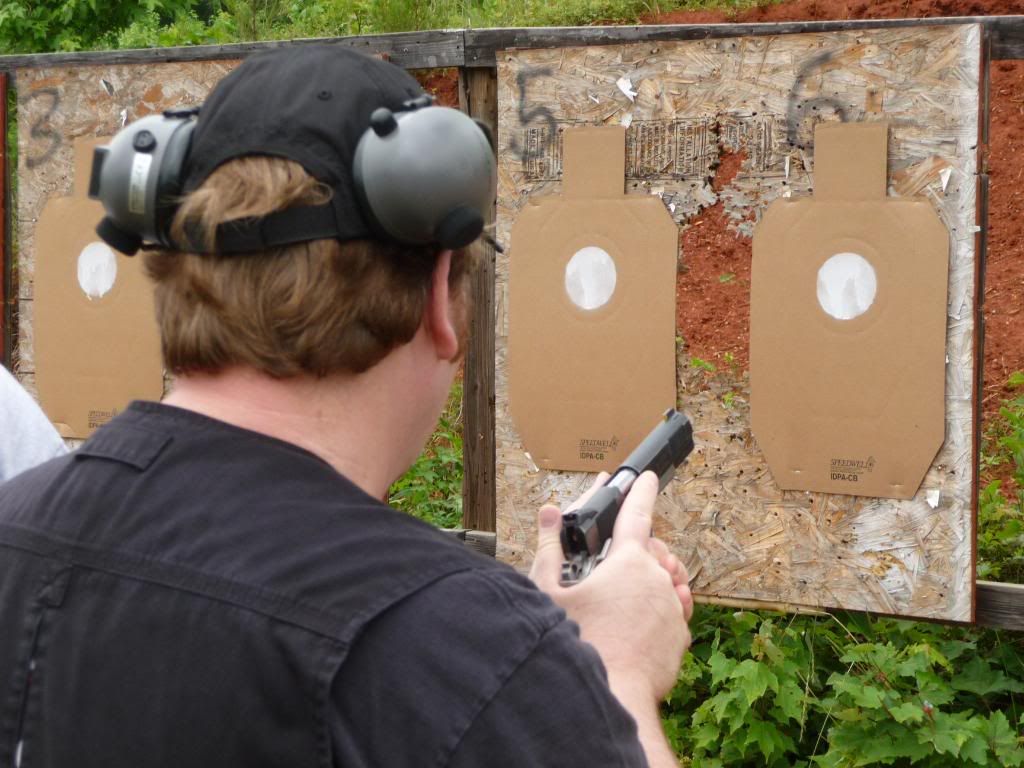

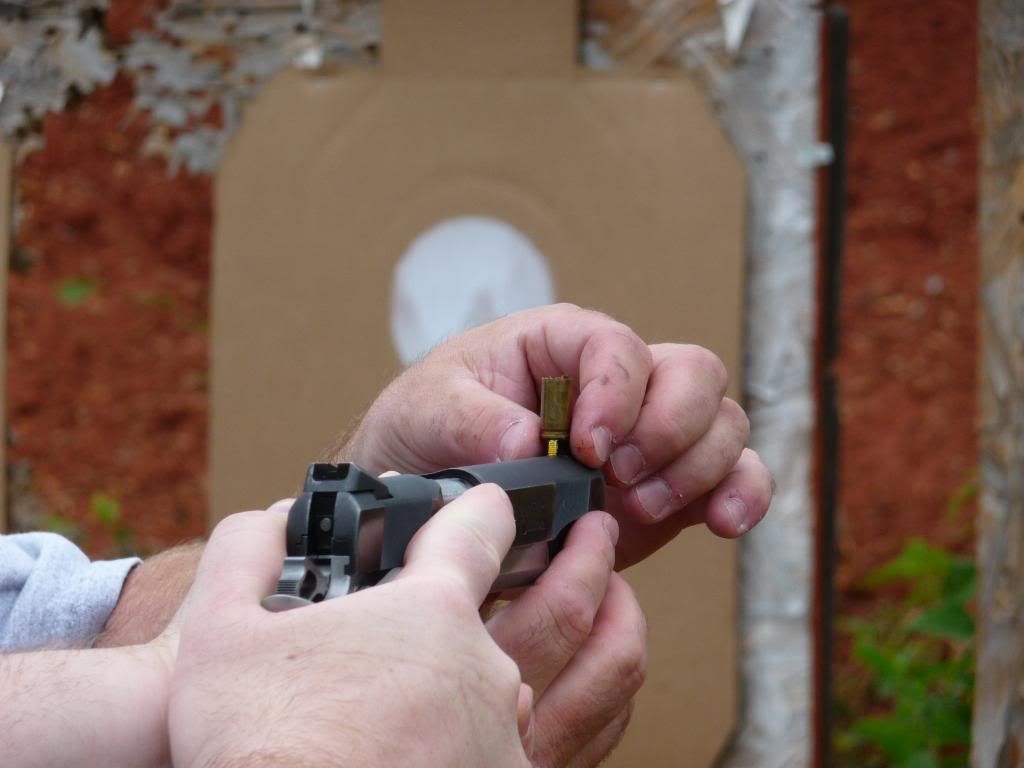
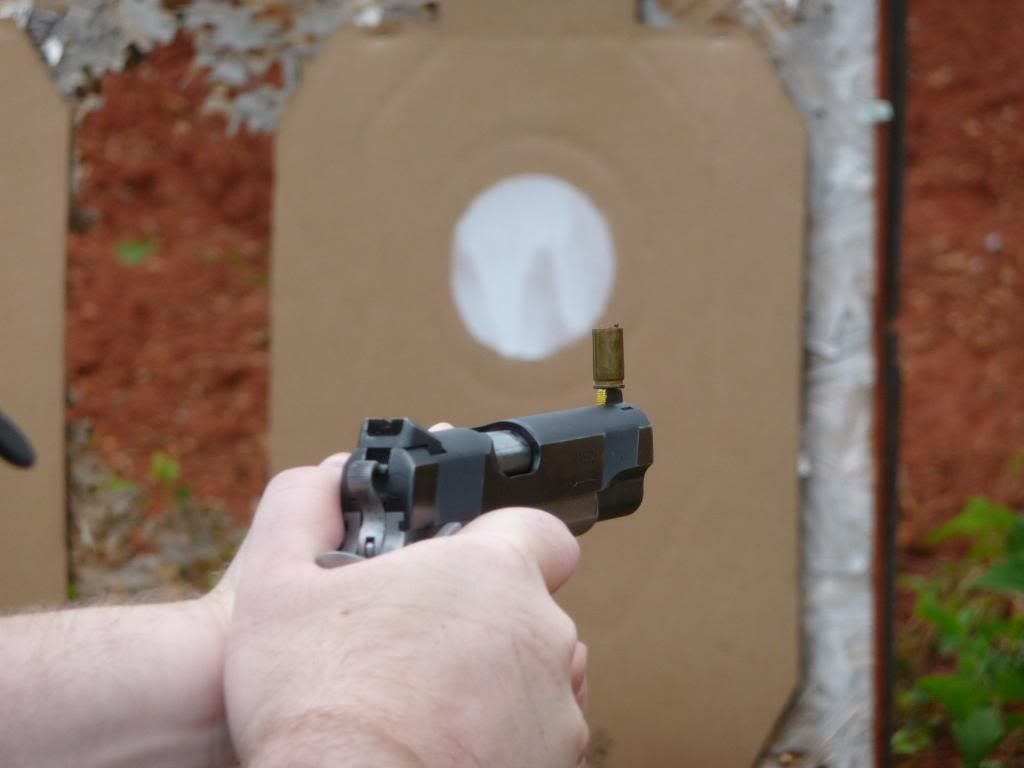
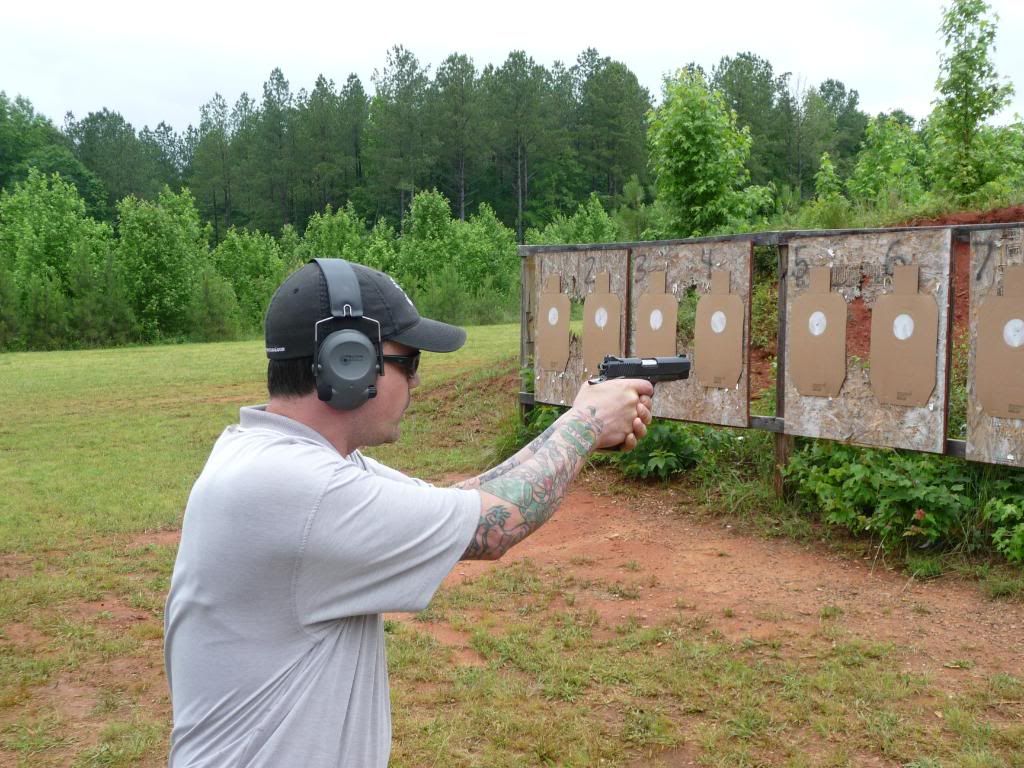
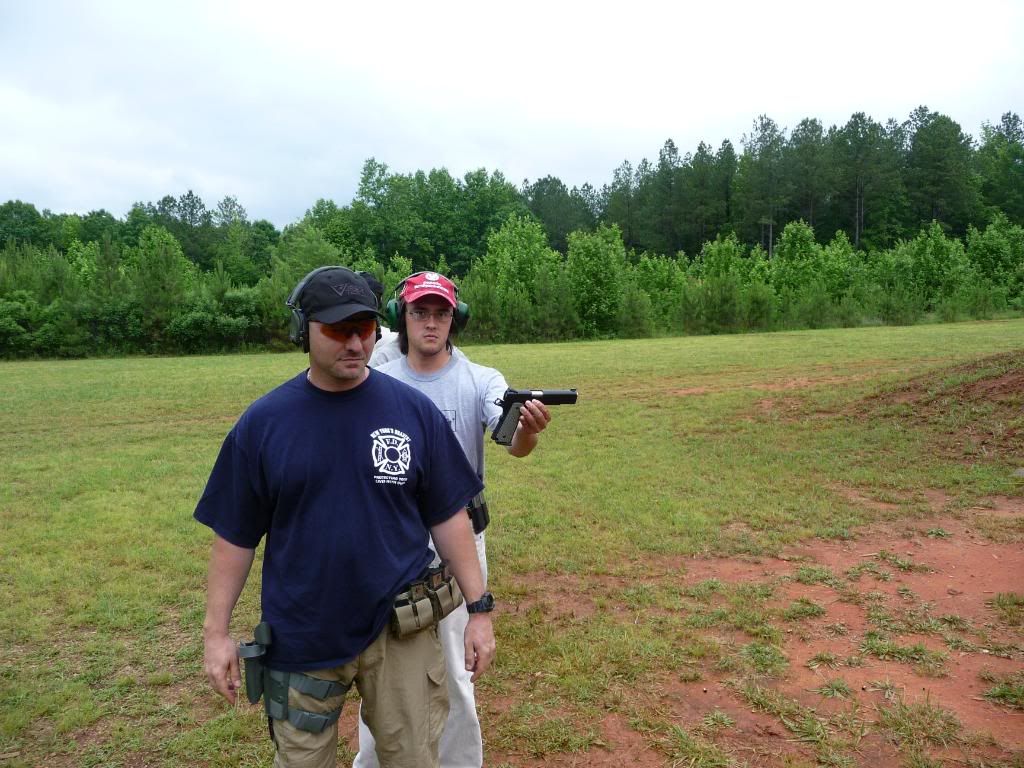
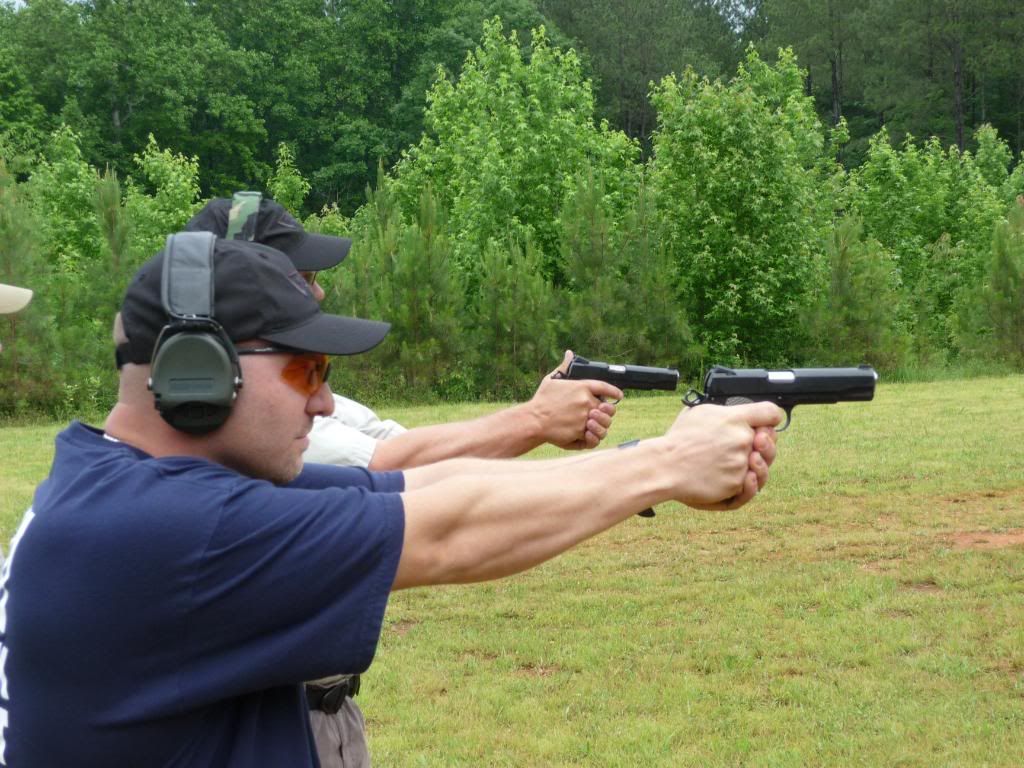
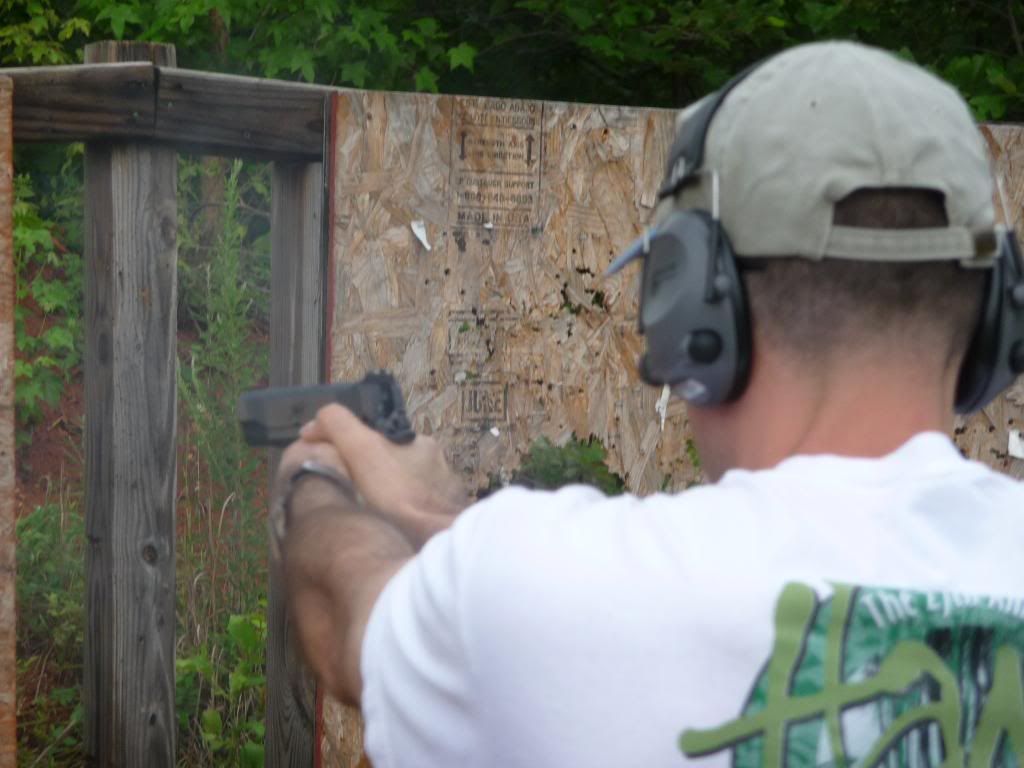
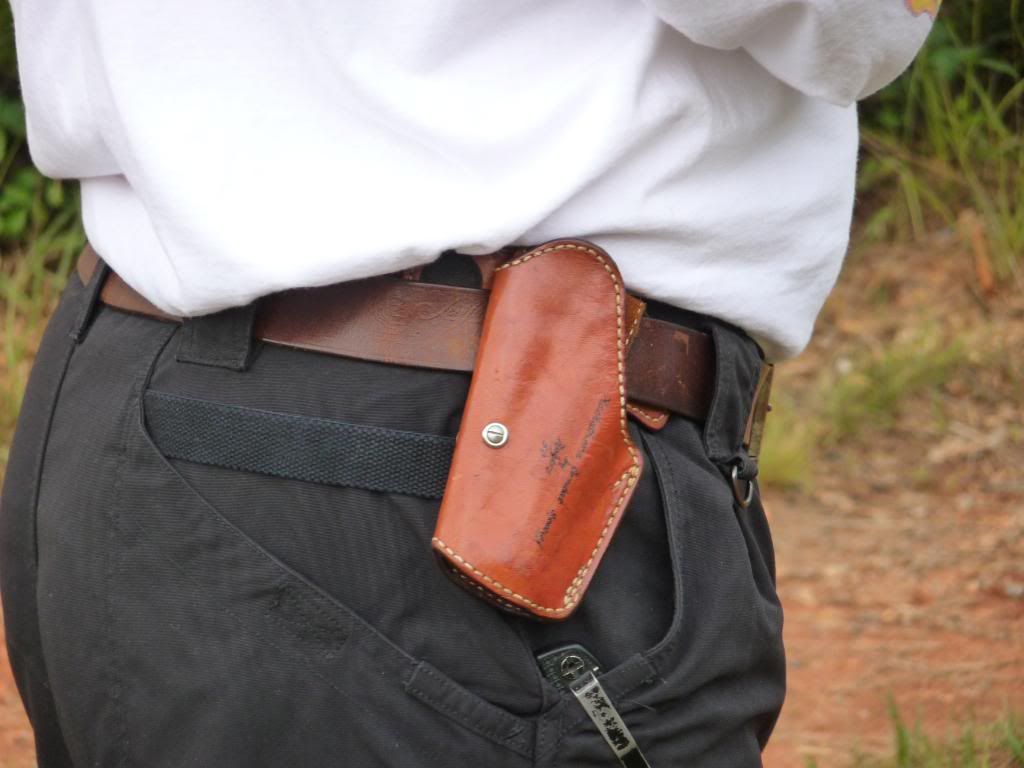
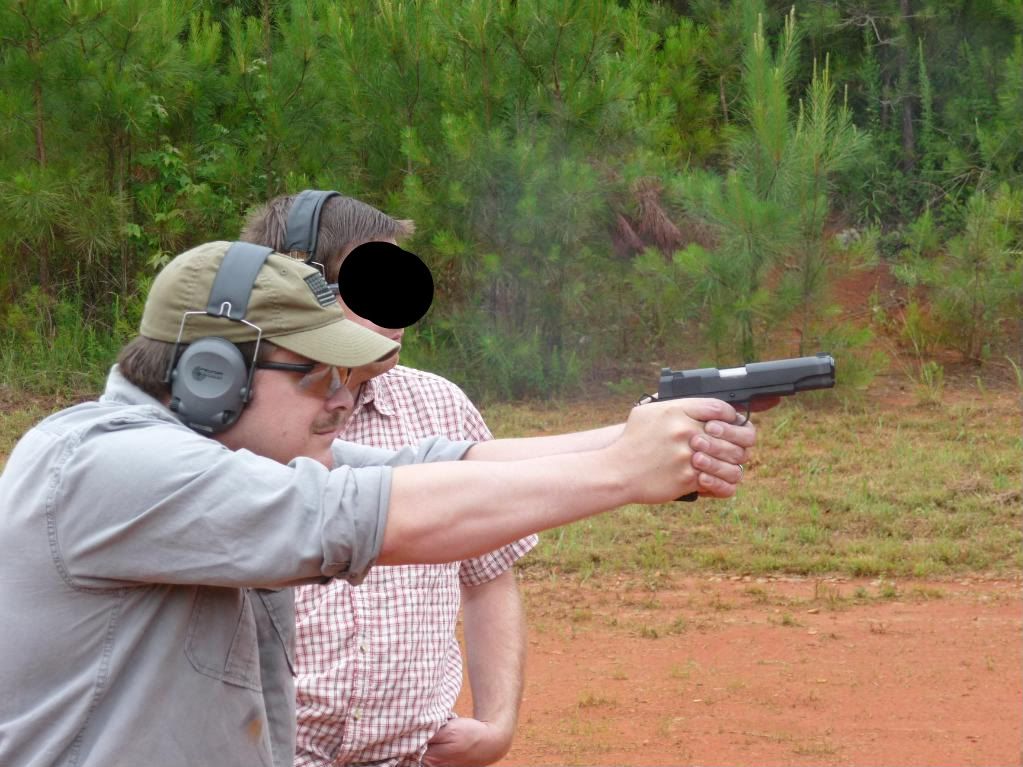


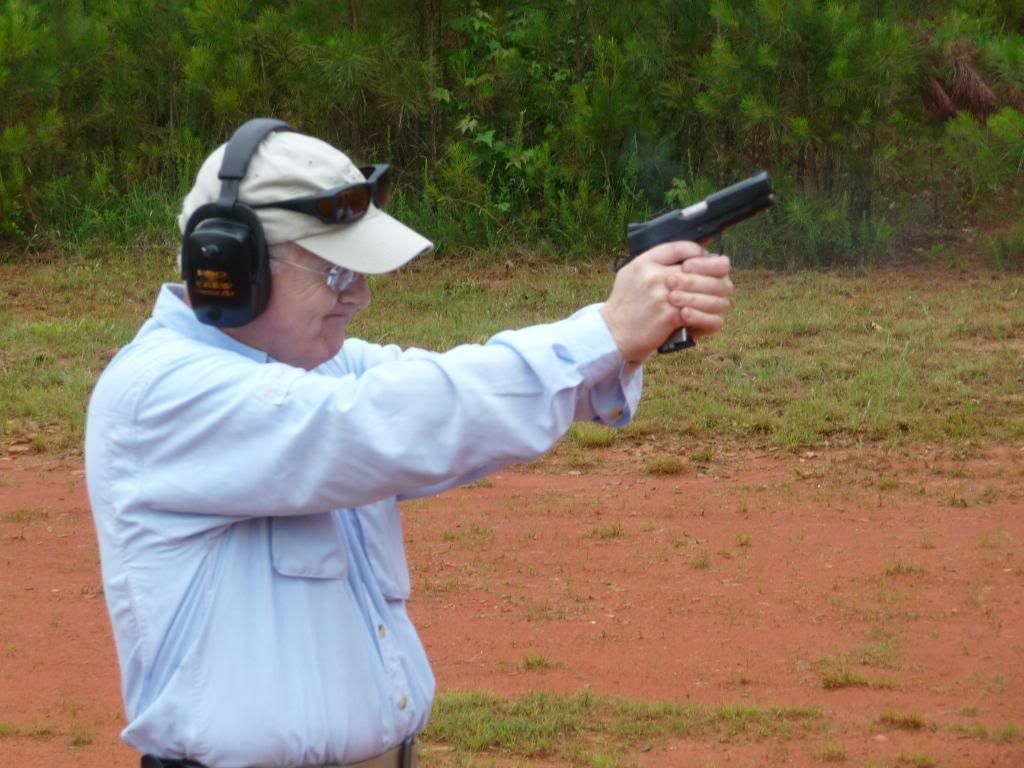
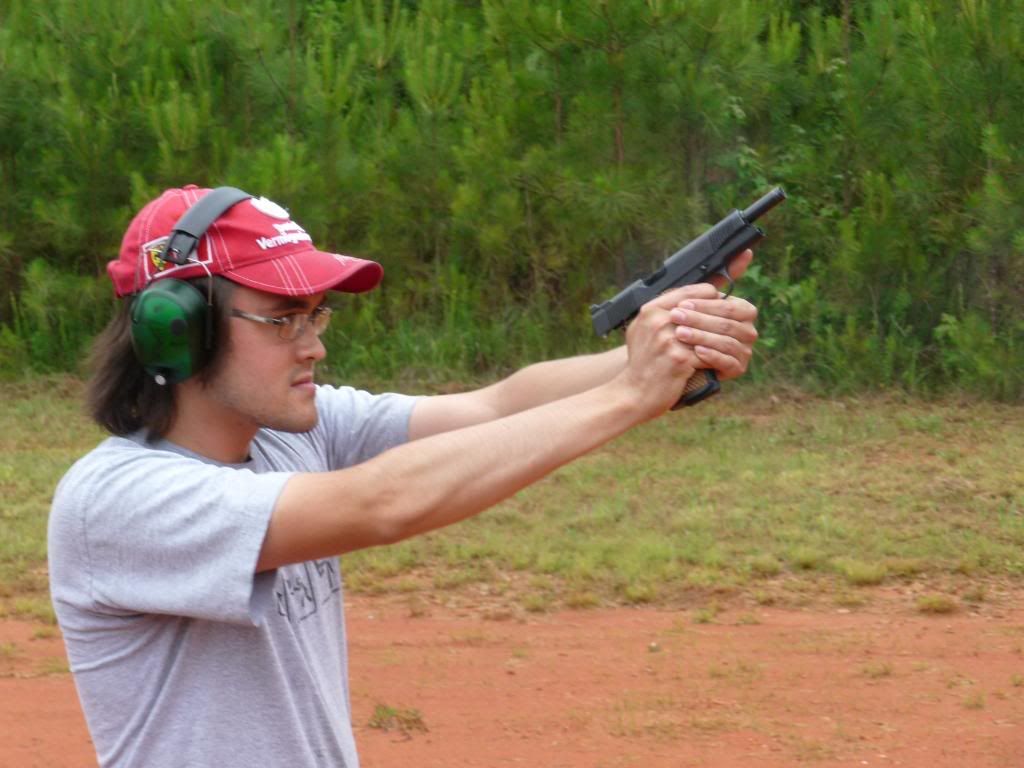
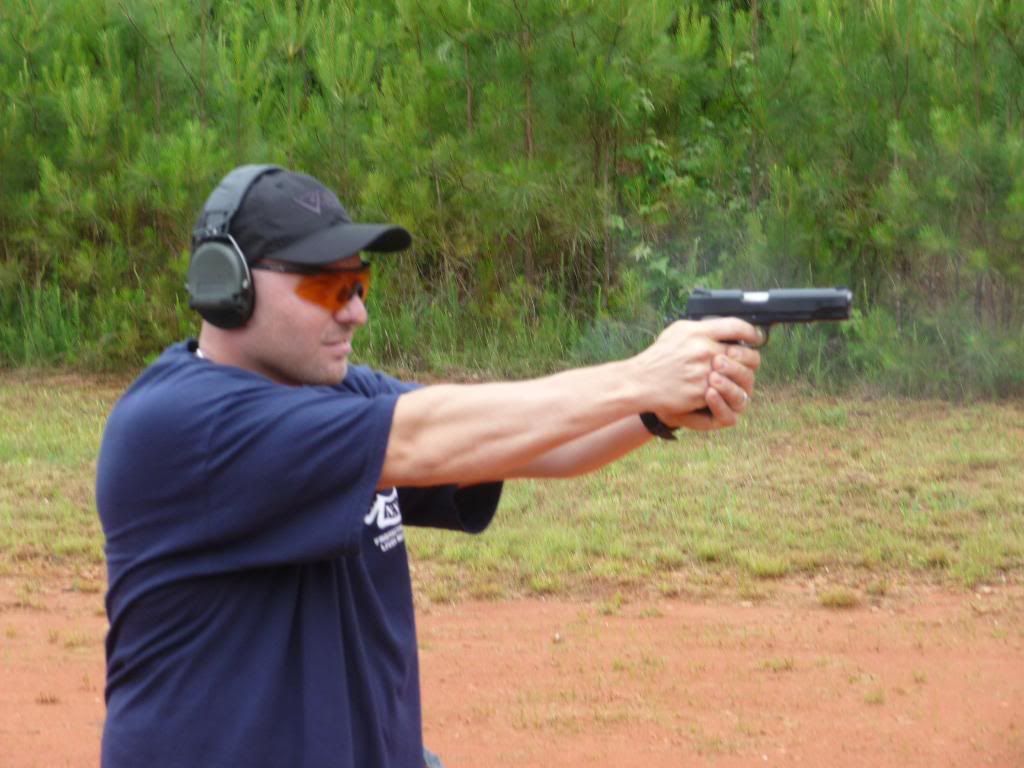
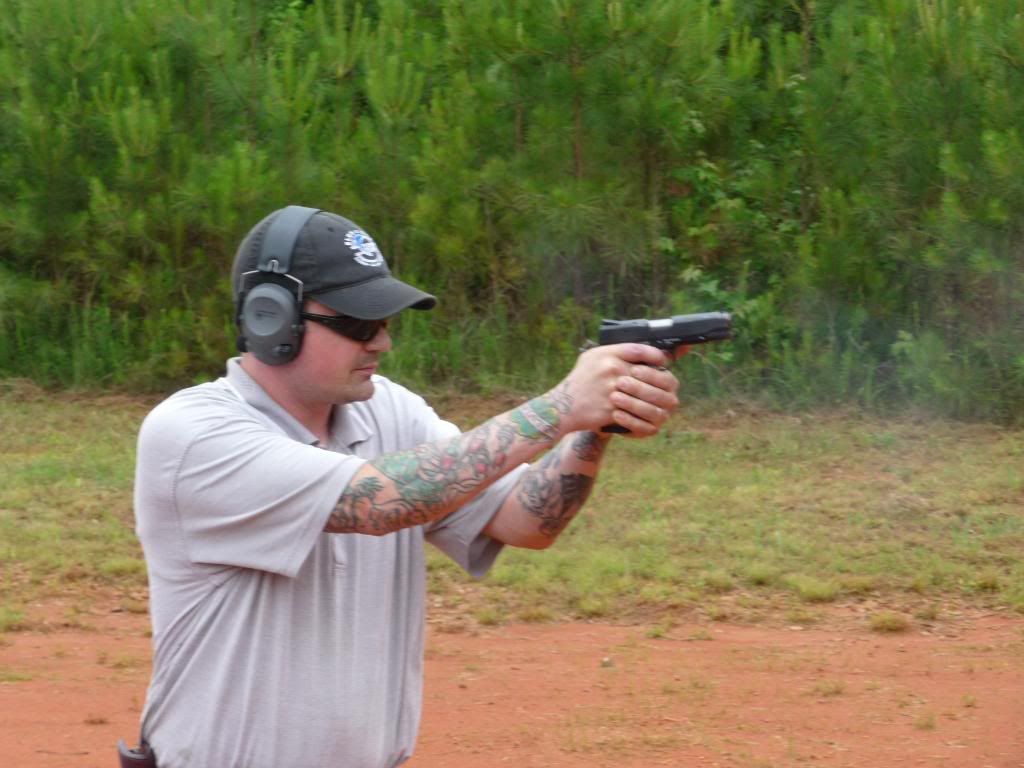
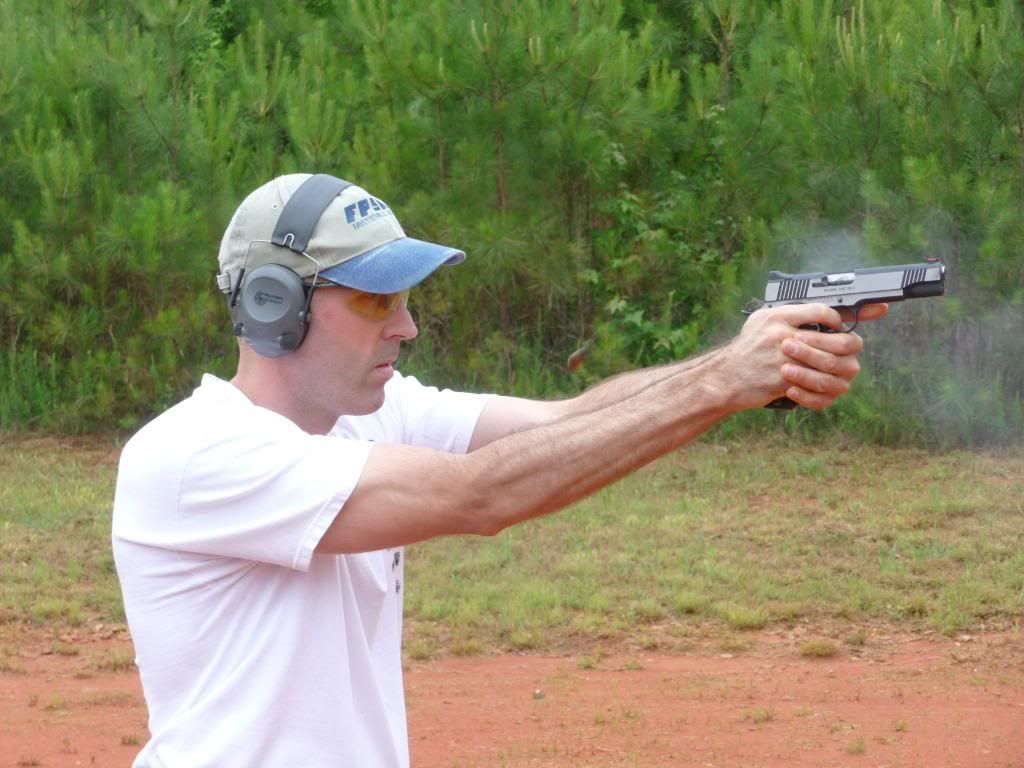
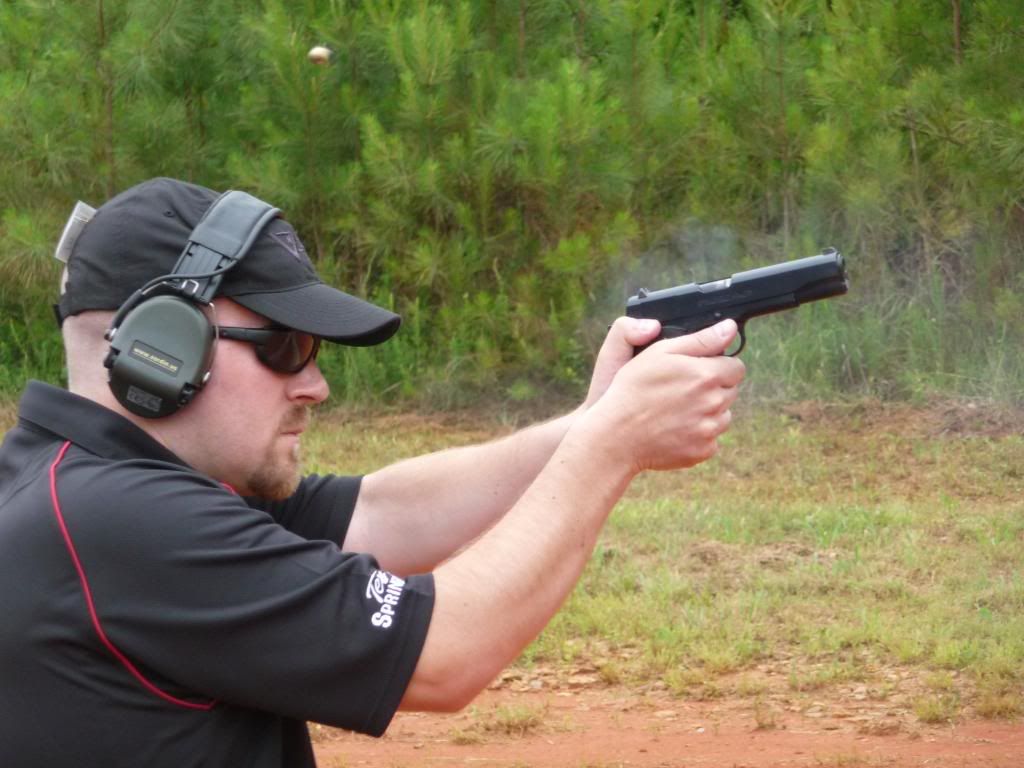
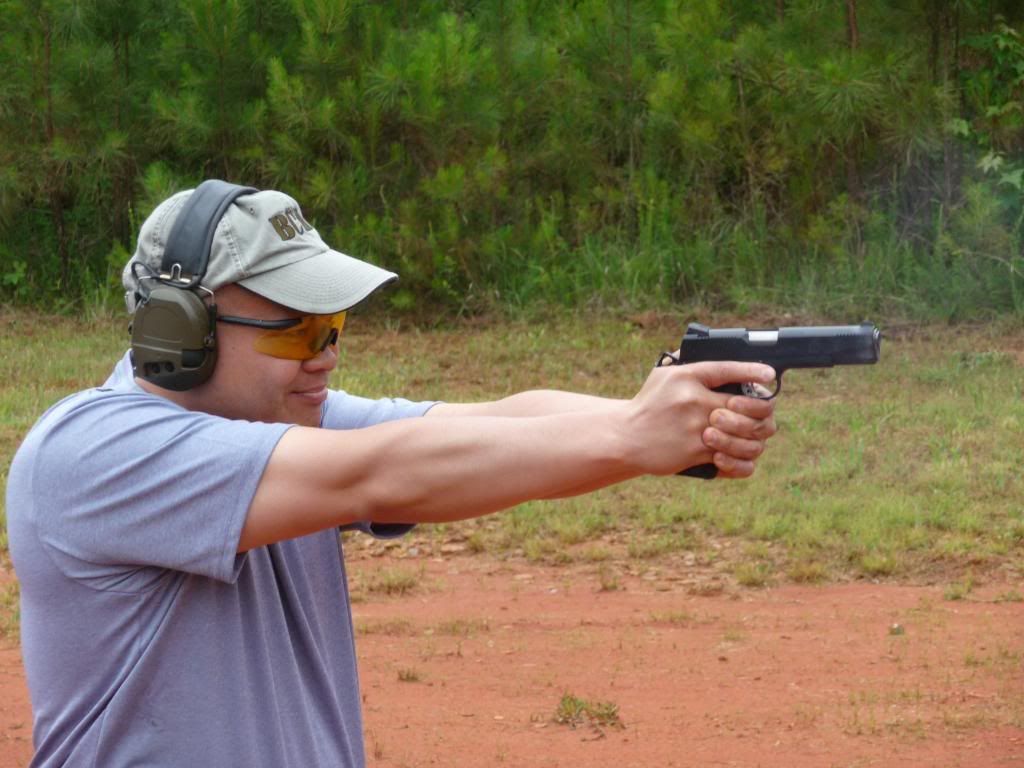
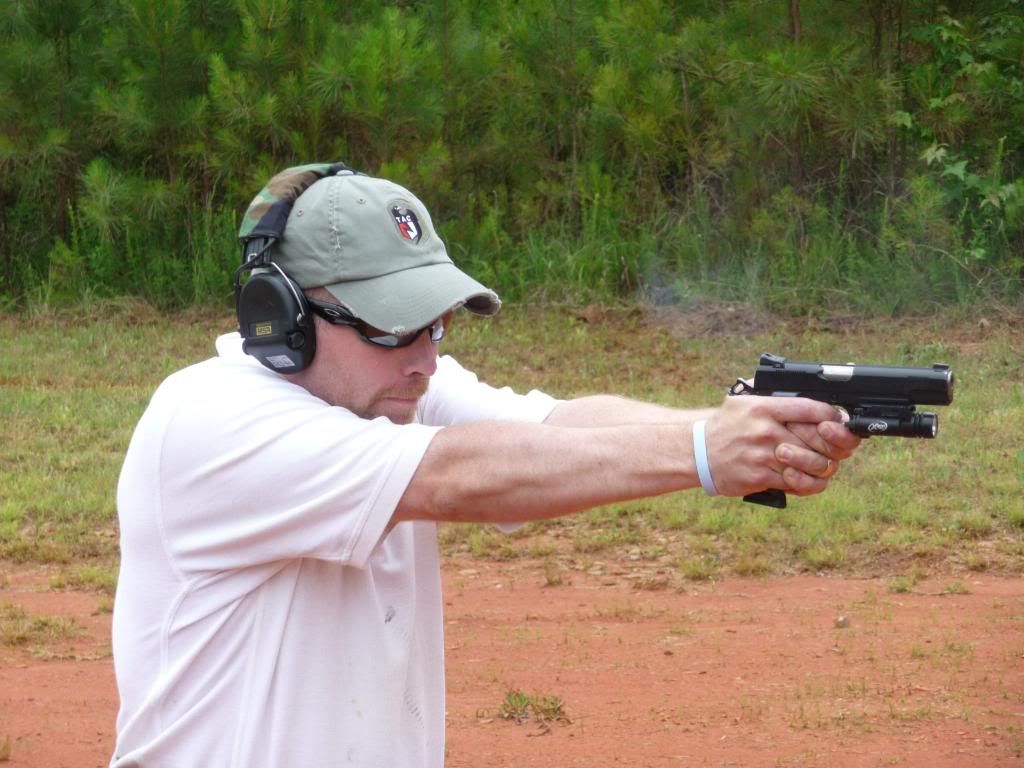
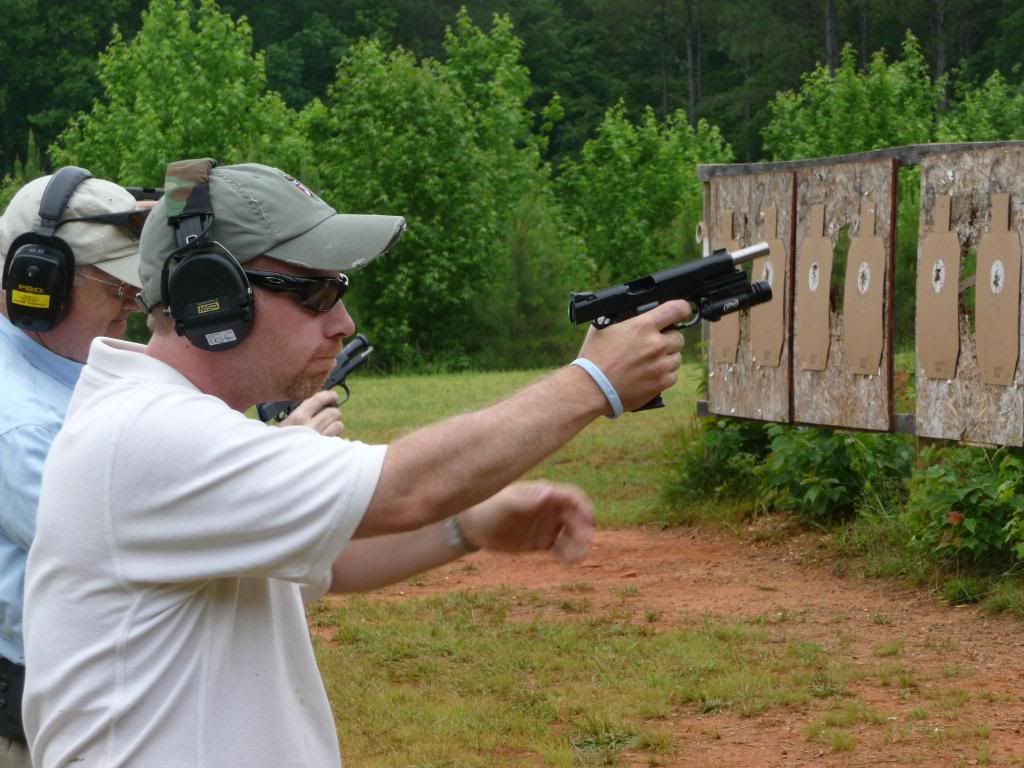
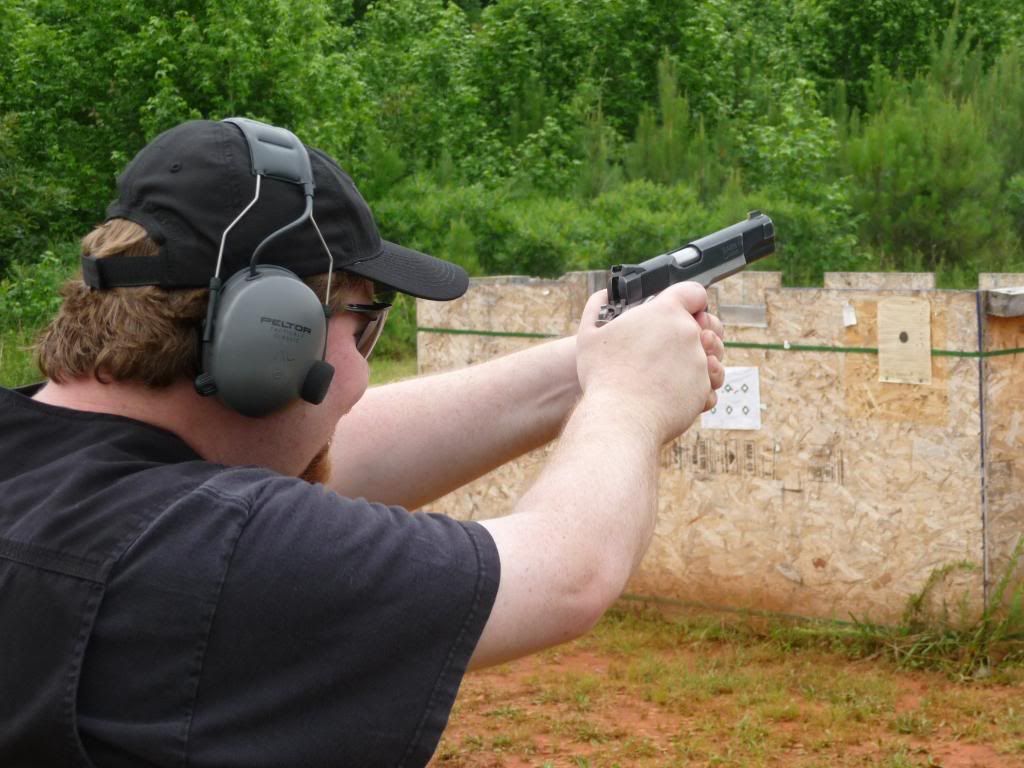
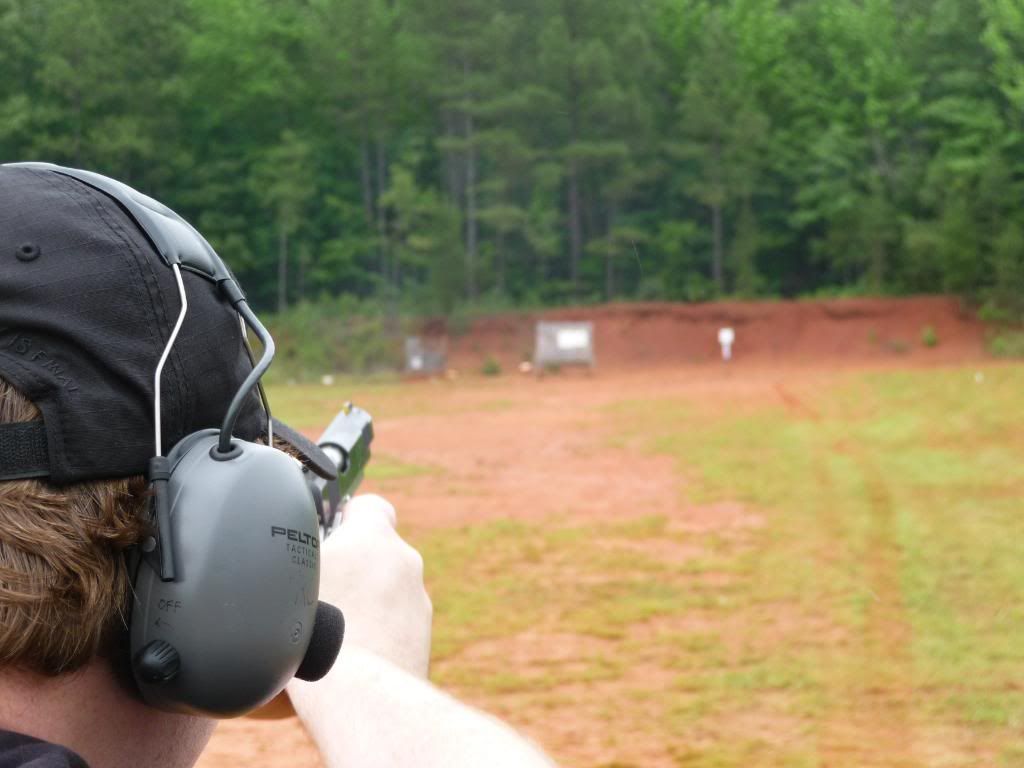
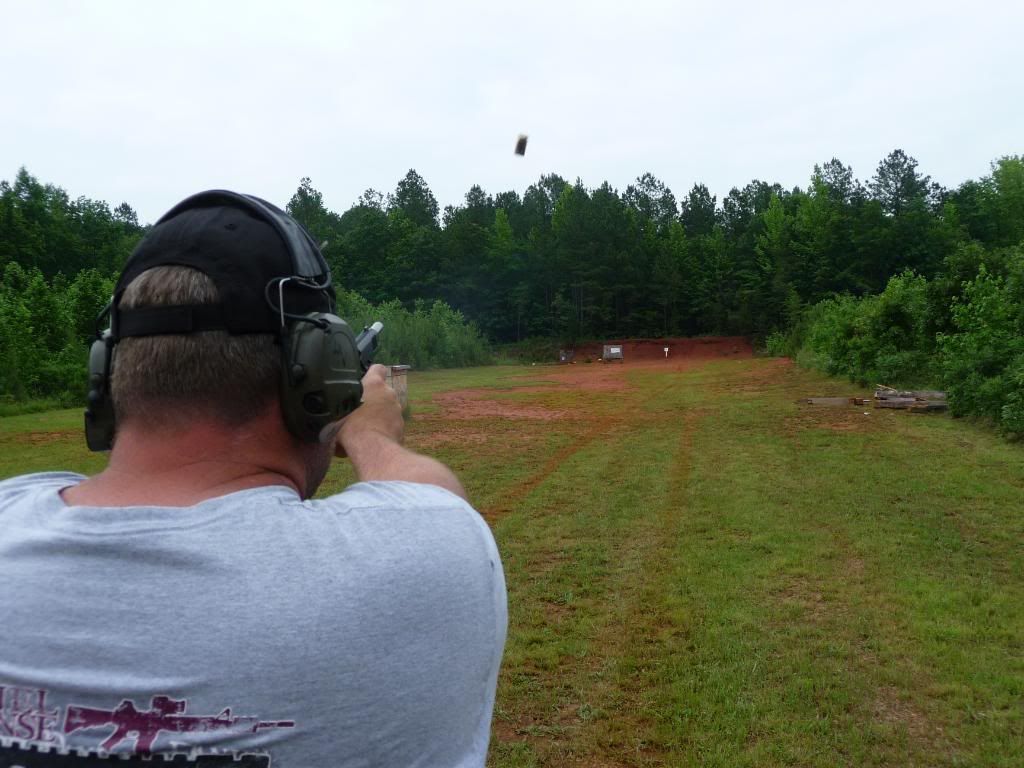
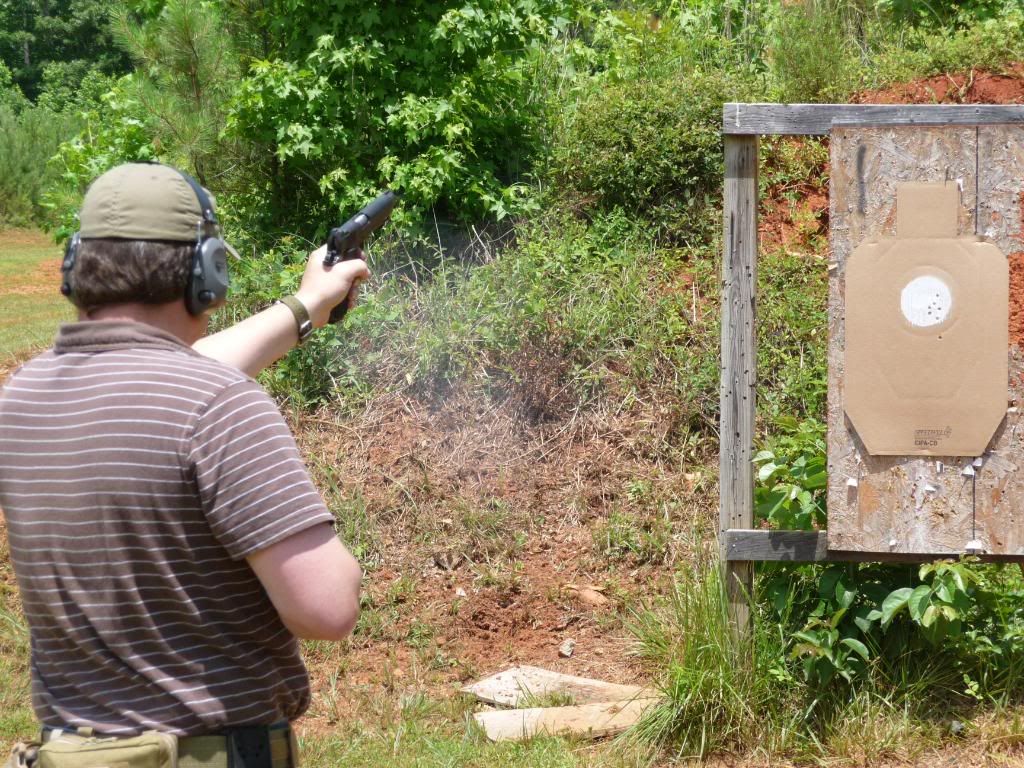
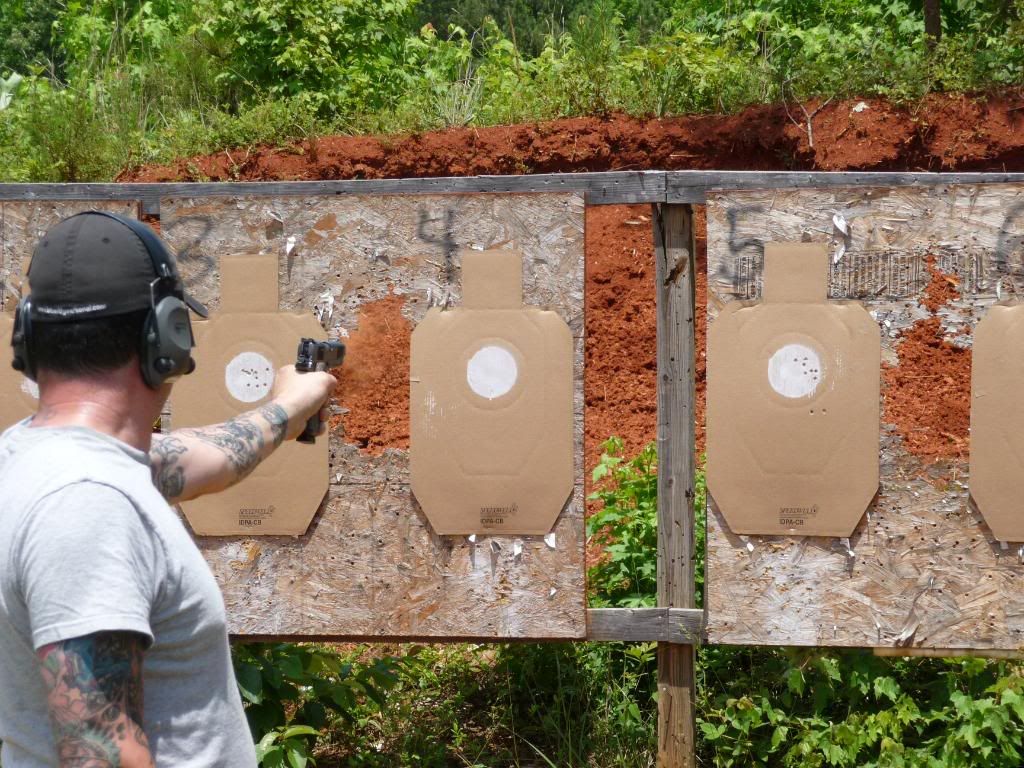
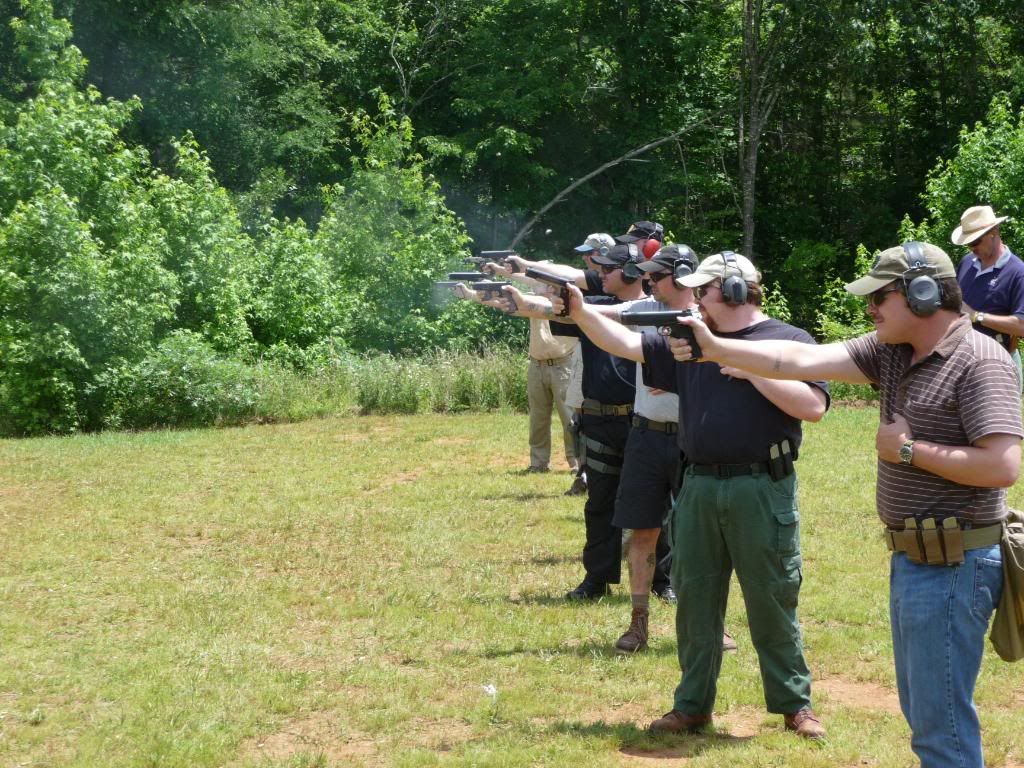

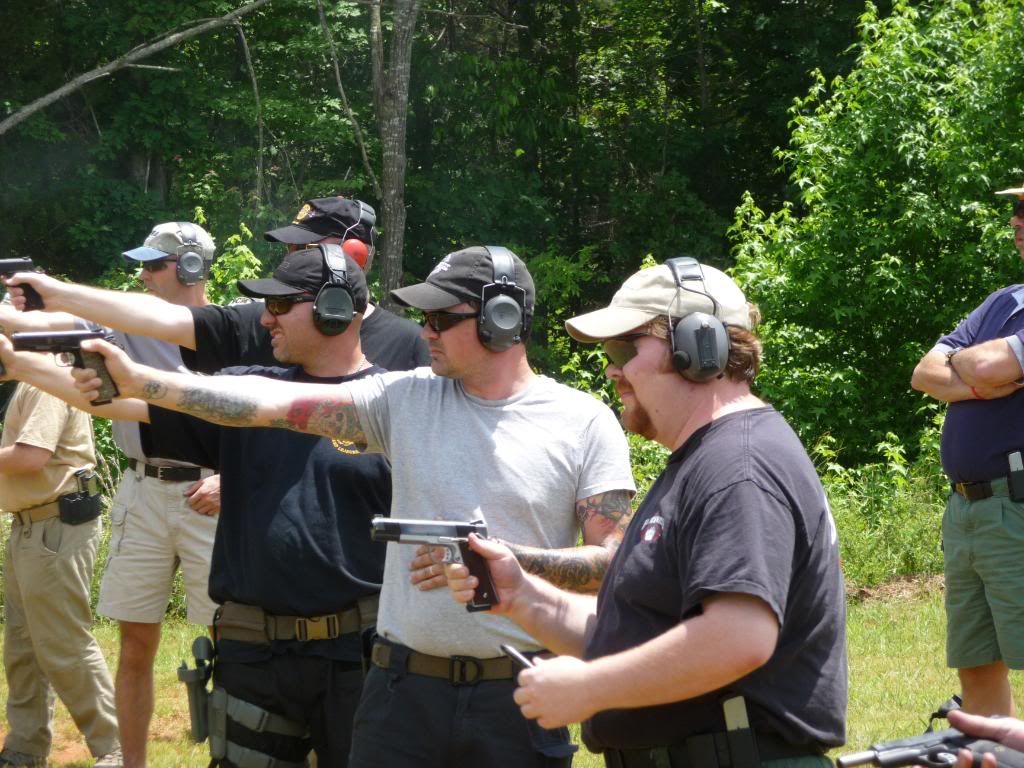

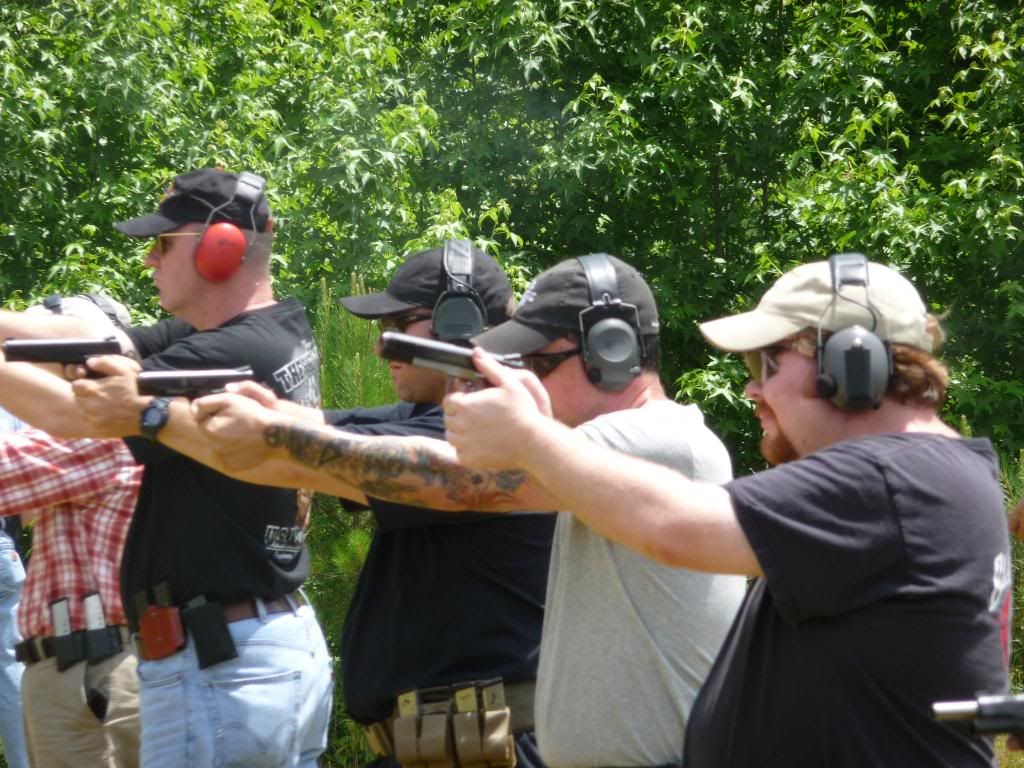

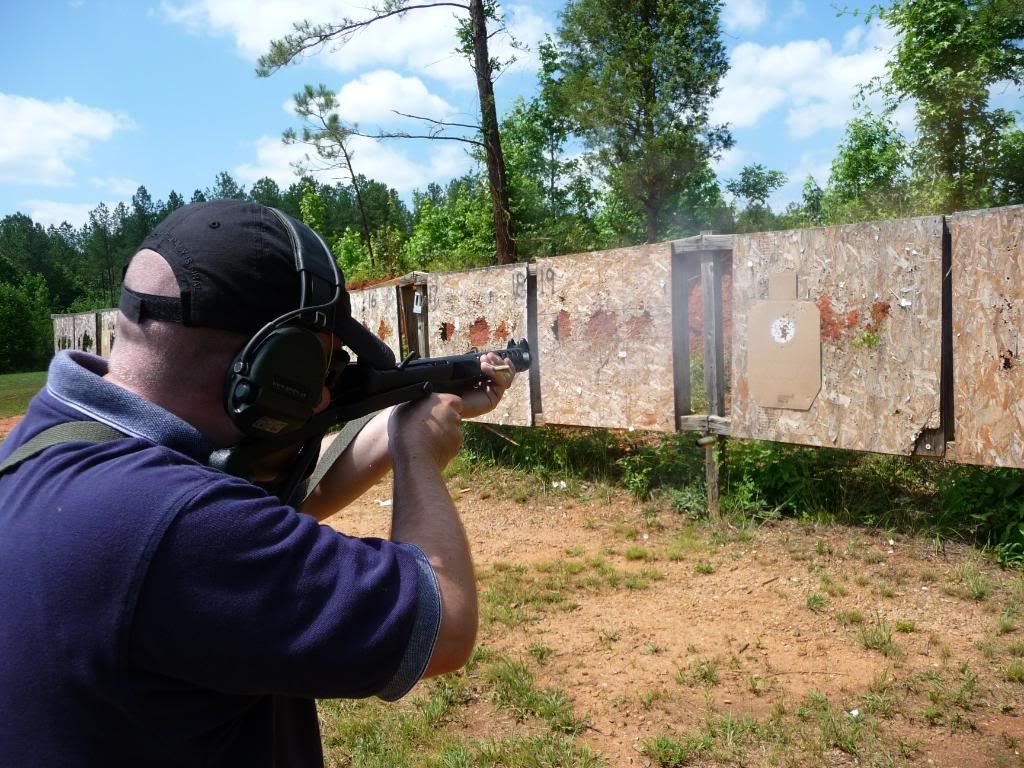
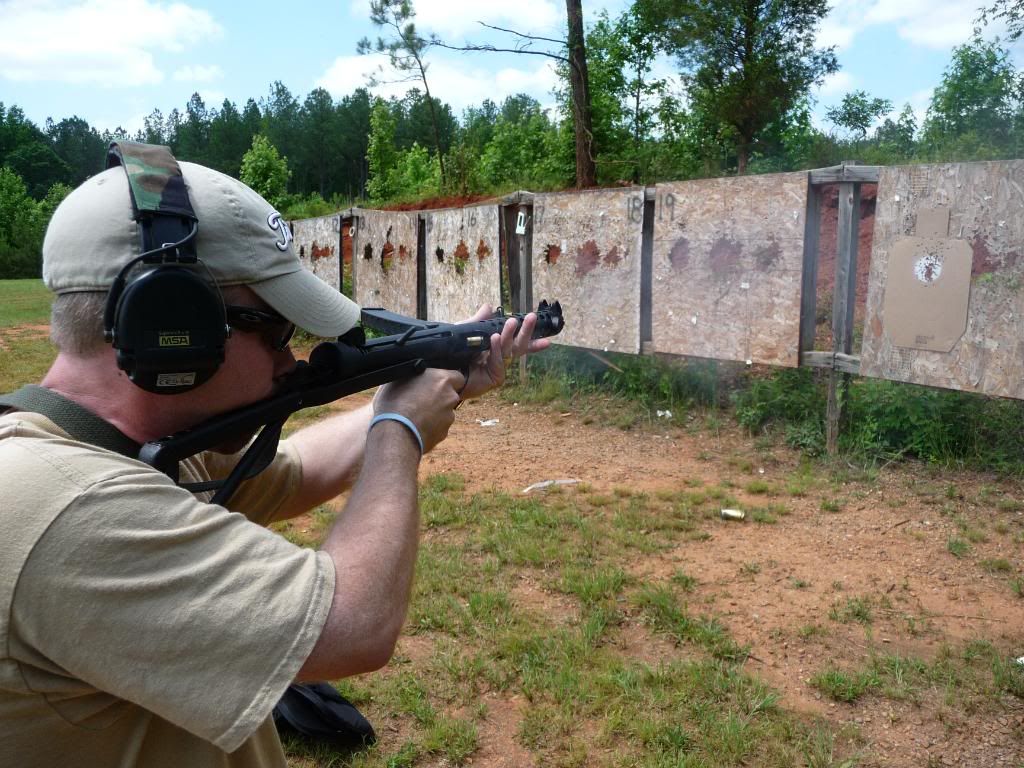
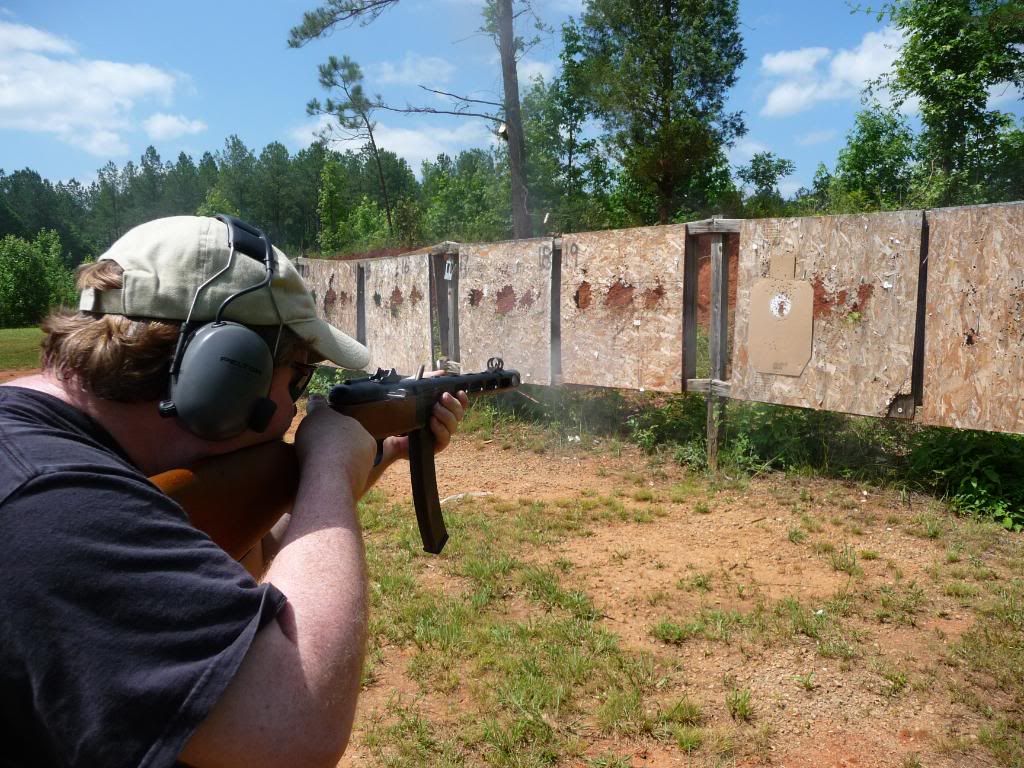
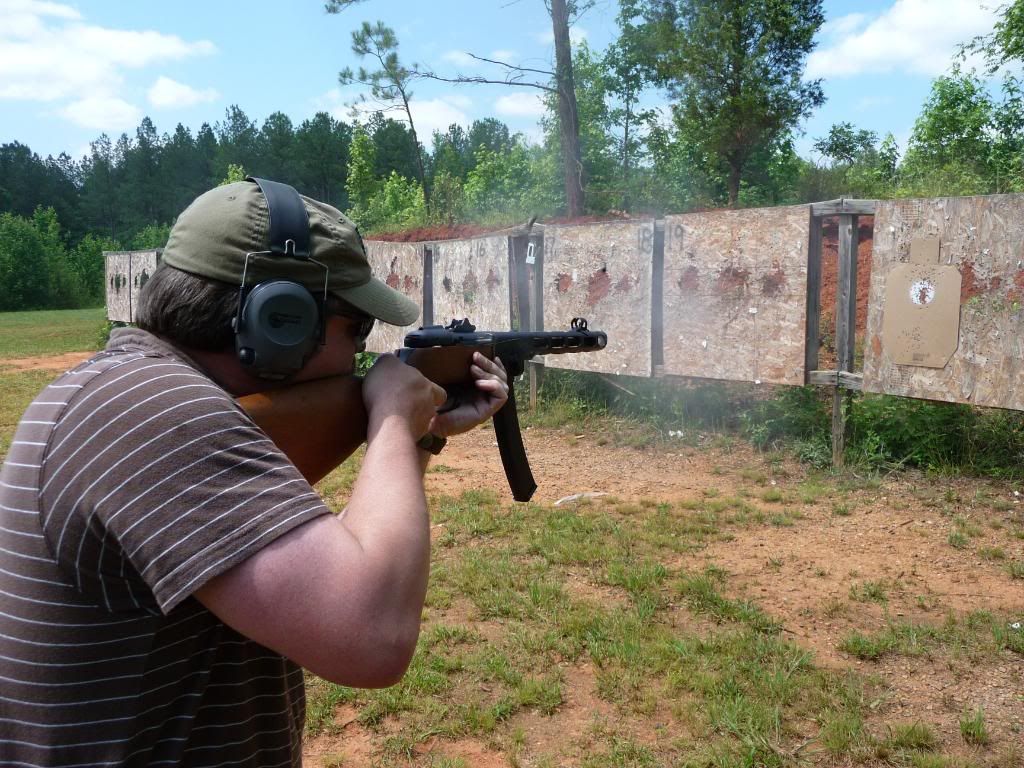



Bookmarks